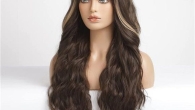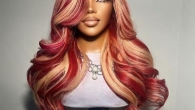
Where Wig Originated: A History of Hair Across Civilizations
Crowning our heads with elaborate or practical adornments has been a human custom for millennia. Wigs, those coverings of hair worn on the head, boast a rich and surprising history, gracing the heads of pharaohs, socialites, and everyone in between. But where did wig originate, and how have they evolved throughout the ages?
Unveiling the Wig’s Origins: A Journey to Ancient Egypt
The earliest evidence of wigs points to ancient Egypt, dating back to around 3400 BC. The scorching desert sun necessitated some form of head covering, and Egyptians of both high and low social standing shaved their heads for comfort and hygiene. However, a bald head wasn’t exactly fashionable. Enter the wig!

Crafted from palm fibers, wool, and even human hair for the wealthy, these early wigs served a dual purpose: protection and status. Elaborate wigs with intricate styles and even scented cones placed on top became a symbol of affluence and social standing, particularly for pharaohs, queens, and nobles.
Beyond Egypt: Wigs Take the Stage Across Civilizations
The wig’s popularity wasn’t confined to the sands of Egypt. Evidence suggests wigs were worn in ancient Greece, Rome, and Assyria. In Greece, wigs were often used by actors in theatrical performances, while Roman women, particularly those of higher social classes, embraced wigs made from blonde or red human hair, sometimes even sourced from Germanic regions.
Ꮤigs also held religious significance in some cultures. In ancient Judaism, for example, certain religious practices involved covering the head, and wigs could serve this purpose. Head coverings also played a role in some indigenous cultures of the Americas, with wigs or hairpieces crafted from natural materials used for ceremonial purposes.
The Middle Ages: Wigs and the Shifting Sands of Fashion
The use of wigs waned somewhat during the European Middle Ages, with a focus on natural hair and head coverings like veils. However, wigs did make a comeback by the late Middle Ages and Renaissance, particularly for men experiencing hair loss.

Interestingly, syphilis, a rampant disease in Europe during this period, often caused hair loss. Wigs offered a way to conceal this condition, and some speculate that King Louis XIV of France’s well-documented wig use stemmed from his battle with syphilis.
The Golden Age of the Wig: 17th and 18th Century Europe
The 17th and 18th centuries witnessed the true golden age of the wig. Extravagant wigs, particularly for men, became a defining fashion statement. These wigs were often made from real human hair, painstakingly styled and powdered white or grey. The size and complexity of these wigs grew more elaborate as the century progressed, reaching a peak of absurdity with towering, multi-tiered styles.
Wigs served several purposes during this era. They were status symbols, a way to display wealth and social standing. They also provided a way to cover thinning hair or baldness, and the powdered styles helped to mask lice and other hair-related issues. However, these elaborate wigs were also incredibly high-maintenance, requiring constant upkeep and cleaning.
Beyond Europe: Wigs in Asia and Beyond
While Europe saw a dramatic rise in wig use during the 17th and 18th centuries, wigs also held significance in other parts of the world. In China, for example, Qing Dynasty emperors wore elaborate black wigs with a long braid as a symbol of their power. In Japan, samurai warriors sometimes wore wigs as part of their armor, and geisha wore wigs adorned with ornaments for special occasions.

The Decline of the Elaborate Wig: A Return to Natural Hair
By the late 18th century, the tide began to turn on the extravagant wig. Simpler styles emerged, and eventually, natural hair regained favor. The French Revolution, with its emphasis on liberty and equality, also contributed to the decline of wigs, which were seen as symbols of the aristocracy.
From Practicality to Pop Culture: The Modern Wig
Wigs haven’t entirely vanished from the modern world. They continue to be used for various purposes, including:
-
Medical reasons: People undergoing chemotherapy or experiencing hair loss due to medical conditions may wear wigs.
-
Fashion: Wigs offer a way to experiment with different hairstyles and colors without commitment. They are also popular among celebrities and performers.
-
Religious purposes: Some religious groups or individuals may wear wigs for religious reasons, particularly those requiring head coverings.
The Future of Wigs: A Look Ahead
The story of wigs doesn’t end with the decline of the powdered monstrosities of the 18th century. Modern technology and changing attitudes are shaping the future of wigs in exciting ways:

-
Advancements in Materials: Synthetic fibers have become increasingly sophisticated, offering wigs that are more natural-looking, comfortable, and affordable than ever before. Additionally, innovations in lace and mesh cap construction are creating wigs that are easier to wear and blend seamlessly with the wearer’s natural hair.
-
Customization Options: The modern wig market caters to a wide range of needs and preferences. Wigs come in a vast array of colors, textures, and lengths, allowing for extreme personalization. Additionally, custom-made wigs are becoming more accessible, offering wearers the perfect fit and style.
-
Medical Wigs: Technological advancements are leading to the development of even better medical wigs. These wigs are designed to be comfortable and lightweight for wearers undergoing medical treatments that cause hair loss. Furthermore, 3D printing is being explored to create custom-fit medical wigs that perfectly match a patient’s natural hair characteristics.
-
Breaking Gender Norms: Traditionally, wigs have been more commonly associated with women. However, there’s a growing trend of men embracing wigs for self-expression and experimentation with different hairstyles. This shift towards gender-neutral fashion is opening up new possibilities for the wig industry.
Embrace Your Hair Journey: Wigs for Everyone
Wigs offer a unique and versatile tool for self-expression and hair creativity. Whether you’re seeking a practical solution for medical hair loss, a fun way to change up your look, or a religious head covering, there’s a wig out there to suit your needs. Modern wigs are comfortable, natural-looking, and come in a vast array of styles and options.
Discover the Wig World!
Ready to explore the world of wigs? Here are some ways to get started:

-
Browse online retailers: Numerous online retailers offer a wide selection of wigs. Be sure to read reviews and compare prices before making a purchase.
-
Visit a wig specialty store: Wig specialty stores offer a personalized experience, with knowledgeable staff who can help you find the perfect wig for your needs and preferences.
-
Consult a hairstylist: Hairstylists can offer guidance on wig selection, styling, and care. They can also help you achieve a natural-looking wig application.
Embrace your hair journey and explore the possibilities that wigs offer. With their rich history, continuous innovation, and ever-expanding options, wigs are poised to remain a relevant and exciting part of the fashion and self-expression landscape for years to come.












Leave a Reply